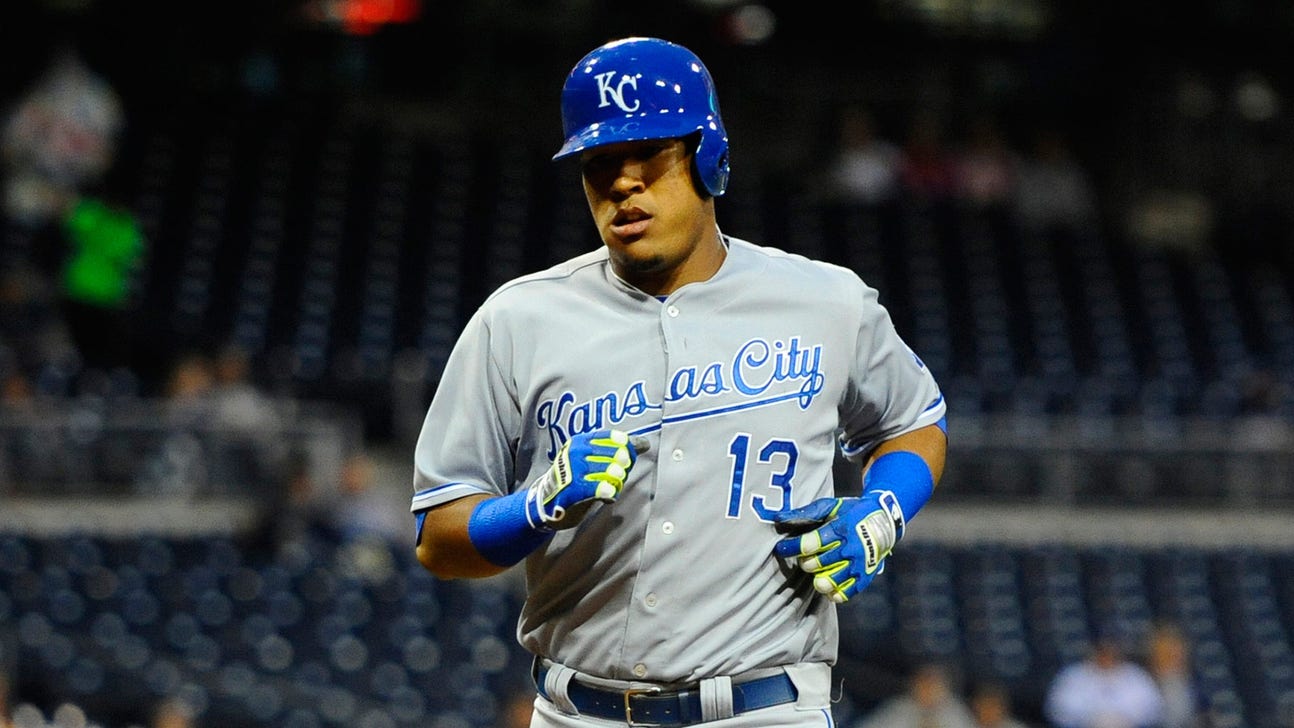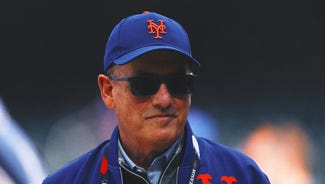
Why locking down pre-arbitration deals (usually) is a smashing success

There’s this great moment after every big free-agent signing when the club has a press conference to introduce the player. Everybody talks about the big things that this contract means; the club talks about what the player will do on the field, and the player talks about how happy he’ll be in the new city, and everybody in the room and/or stadium parking lot ignores that these things have a brutal record of not working out how anybody hoped. We should all watch these conferences and cringe, knowing that every optimistic pronouncement is just dramatic irony for Future Us.
The pre-arbitration extension, though, is different. We love the pre-arbitration extension. We sometimes love it so much we insult the agent who negotiated it. There’s almost no downside, tons of upside and everybody wins. In theory, the pre-arbitration extension is safe to celebrate. It’s always good to test theory against reality, though, so let’s review a year’s worth and see whether the theory holds up.
We went back and looked at all the extensions signed between Jan. 1, 2012 and Dec. 31, 2012. We limited it to deals that were signed at least three years before the player was eligible for his first free agency. We pulled out every deal that bought out at least one free agent season, meaning it covered at least four future seasons. I should say, actually, that we will do this. We haven’t done it yet, so if you think the language in this intro is slyly setting up some particular conclusion, it’s not. We genuinely have no idea whether the results will confirm or deny the intelligence of these deals. What is wanted is not the will to believe, but the wish to find out.
One note: We’re evaluating these deals on the basis of whether the club would take the remaining portion only. In other words, the two and a half years that are in the books are ignored; most of the upside and downside in these deals comes at the far ends, when the player starts to get really expensive, and when the uncertainty truly arrives. So a simple way of thinking about it: Would the club sign the rest of this deal today, if it had the option.
There are 12 of these deals. In chronological order:
Gio Gonzalez: Five years, $42 million, with two club options, signed four years before free agency.
Since then: Third-place Cy Young finish in 2012; 26th-best pitcher in baseball since start of 2012, by Baseball-Reference’s WAR; but this year hit the disabled list for the first time as a big leaguer, with shoulder inflammation. Some control problems. Significant velocity drop in his three post-DL starts.
Still owed: About $39 million through 2017.
PECOTA projects: About 3.8 WARP between now and the end of the deal.
Would they sign him today for what he’s owed? PECOTA’s pessimism aside, they would, though they might prefer to use Gio’s next few weeks to see whether he’s actually right again.
Salvador Perez: Five years, $7 million, with three club options, signed six years before free agency.
Since then: An All-Star game appearance and a Gold Glove in 2013; might be the best catcher in the American League right now.
Still owed: About $24 million through 2019, with salary escalators likely based on his performance thus far.
PECOTA projects: About 12.1 WARP.
Would they sign him today for what he’s owed? Heavens yes. This might be the closest thing to a Longoria-style theft right now. The arbitration costs alone for a star catcher like Perez make his two free agents seasons something like two free spins for the Royals.
Cameron Maybin: Five years, $25 million, with one club option, signed four years before free agency.
Since then: A down year in 2012, a year lost almost entirely to injury in 2013, and only the most modest bounce back this year; extended stints on the disable list for knee, wrist and shoulder injuries.
Still owed: About $19 million through 2016, with a club option for 2017 that is effectively $8 million.
PECOTA projects: 5.1 WARP through 2016.
Would they sign him today for what he’s owed? Probably on the fence, but PECOTA would, and the affordable option in 2017 provides a bit more upside.
Andrew McCutchen: Six years, $51 million, with one club option, signed four years before free agency.
Since then: Third-place MVP finish, then an MVP award, and fourth in the majors in WARP this year; one of the most consistent slash lines in the NL over the past three years, and a career-best True Average this season.
Still owed: About $55 million through 2018, assuming the inevitable picking up of his option in the final year.
PECOTA projects: 16.1 WARP through 2018.
Would they sign him today for what he’s owed? Most teams would probably sign him for triple what he’s owed.
Alcides Escobar: Four years, $10.5 million, with two club options, signed four years before free agency.
Since then: Around average 2012 and 2014 seasons, but below replacement level in 2013; defensive metrics don’t like him at shortstop, but eye-testers do; 75 stolen bases with the game’s best success rate since 2012; not a good hitter, but wild fluctuations have made it hard to pin down what to expect.
Still owed: About $16.25 through 2017, though the final two years are club options in case he craters more permanently.
PECOTA projects: Around 1 WARP through 2017.
Would they sign him today for what he’s owed? If you believe he’s an above-average shortstop, then you’d scold PECOTA for underselling him. As a free agent he’d probably get around what he’s owed, so we’ll say yes, if narrowly.
Derek Holland: Five years, $28.5 million, with two club options, signed four years before free agency.
Since then: Two very different seasons that add up to a bit better than average, though he hasn’t pitched yet this year while recovering from knee surgery. His rehab outings are imminent.
Still owed: About $23 million guaranteed through 2016, though the options for 2017 and 2018 (at about $10 million apiece) provide the Rangers more long-term upside.
PECOTA projects: About 2 WARP through 2016. PECOTA is not a big fan.
Would they sign him today for what he’s owed? Sure. League-average pitchers cost more than this, and Holland’s knee injury isn’t too concerning.
Nick Hundley: Three years, $9 million, with one club option, signed three years before free agency.
Since then: A .464 OPS in 2012 and, after a lousy start to 2014, a trade to Baltimore for reliever Troy Patton.
Still owed: About $2 million this year, with a club option for $5 million that won’t be picked up in 2015.
PECOTA projects: 0.2 WARP this year, 0.1 next.
Would they sign him today for what he’s owed? Obviously not. The Padres had to eat some $1.5 million of what he was owed to move him to Baltimore, which is the definition of a burden contract.
Cory Luebke: Four years, $12 million, with two club options, signed five years before free agency.
Since then: Made five pretty good starts in 2012, and has since missed more than two full seasons trying to come back from Tommy John surgery.
Still owed: About $8 million guaranteed, and two club options that won’t be picked up.
PECOTA projects: PECOTA is foolish for even trying to project Luebke.
Would they sign him today for what he’s owed? No.
Jon Niese: Five years, $25.5 million, with two club options, signed four years before free agency.
Since then: About as good as Derek Holland, except he’s not currently on the DL after surgery and months missed; same ERA+ the past three years as Tim Hudson and Matt Moore.
Still owed: About $19 million guaranteed through 2016, or $40 million through 2018 if options are picked up.
PECOTA projects: About 1 WARP through 2016. PECOTA is the outlier here.
Would they sign him today for what he’s owed? Absolutely.
Carlos Santana: Five years, $21 million, with one club option, signed five years before free agency.
Since then: Among players who have played at least 50 percent catcher since 2012, tied with Salvador Perez for highest WAR in Baseball-Reference’s model. Rarely catches anymore, but even with a low batting average hits enough to carry a corner infield spot.
Still owed: About $28 million through 2017, assuming the $12 million option is picked up.
PECOTA projects: About 10.9 WARP through 2017.
Would they sign him today for what he’s owed? Absolutely.
Madison Bumgarner: Five years, $35 million, with two club options, signed five years before free agency.
Since then: The 13th-best FIP, and eighth-best ERA, and 27th-best ERA+ among starters since 2012. Only 14 pitchers have thrown more innings, only six have more wins, and only 26 have produced more Wins Above Replacement, by Baseball-Reference’s model.
Still owed: $54 million through 2019 if the options are picked up; the cost of those options goes up a couple million bucks if he wins or places high in Cy Young voting.
PECOTA projects: 15.7 WARP through 2019.
Would they sign him today for what he’s owed? Unambivalently yes.
Starlin Castro: Seven years, $60 million, with one club option, signed a bit more than four years before free agency. (Unlike the others on this list, he signed late in the 2012 season.)
Since then: A disastrous 2013 season, in which he was one of the worst players in the league. He is matching his pre-extension value this year, with the best offensive season of his career to date.
Still owed: About $62 million over the next six and a half years, if the club option is picked up. Four of those seasons would have otherwise come after his free agency.
PECOTA projects: About 19.9 WARP through 2020.
Would they sign him today for what he’s owed? Yes.
Twelve deals. Four landslides: Perez, McCutchen, Santana, Bumgarner. Four relatively clear victories for the clubs: Castro, Niese, Gonzalez, Holland. Two pushes: Escobar, Maybin. Two clear losses: Luebke, Hundley.
Taken together, these dozen promise 88 wins above replacement, for about $340 million. They cover 43 player seasons, though 23 of them would have been covered under arbitration:
The rule of thumb is that the arbitration years discount a player’s salary to 40 percent of his market value after he has three years of service time, 60 percent after four years, and 80 percent after five years. (Players hit free agency after six years.) If we set the market value of a win at $7 million, we can estimate the true earning potential for our dozen, based on how much time each must spend at each service time stage:
That’s about $505 million PECOTA would expect these players to earn over the years covered by their contract extensions. They’ll make 67 percent of that, instead.
You might not want to mention this all to Josh Byrnes, the recently fired Padres general manager whose own extensions to Luebke, Hundley and Maybin are the outliers that cost him his job. But extensions work just about as well as you thought they did. If you’re ever at one of the press conferences announcing a pre-arbitration extension, go ahead and give the guy next to you a high five. You’re unlikely to regret it.










